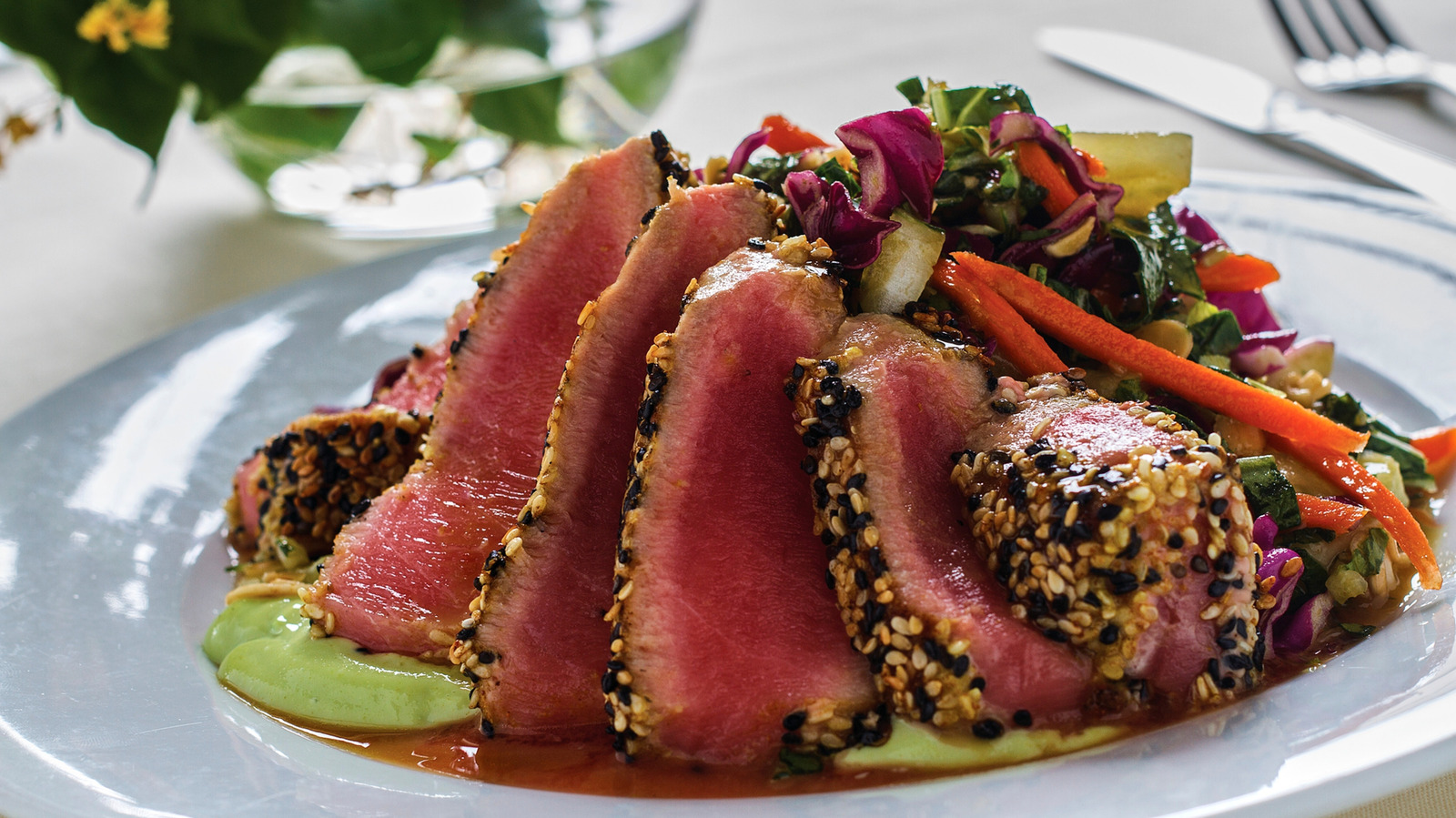Some dishes are prized for their complexity and labor-intensive preparation; a plate of perfectly formed macarons is nothing to sneeze at, after all. Then there are dishes that are almost too simple, requiring few ingredients but precise and exacting preparation. Seared ahi tuna is one such dish. It consists of an ahi tuna fillet with a sesame coating (Gordon Ramsay suggests an extra-thick coating), but an Trader Joe’s Everything But The Bagel seasoning blend coating will also work. When tuna steak is cooked to the appropriate doneness, the perfectly crunchy exterior is contrasted against the rich, buttery taste of the ahi tuna. However, one wrong move can turn this from tasty to terrible, and one common mistake is choosing the wrong cooking oil for searing the fish.
To help us figure out the perfect oil for searing your ahi tuna, we consulted Zach Steen, culinary director for Rick Bayless and the restaurateur behind such restaurants as Frontera Grill. For searing ahi tuna, a cooking method that requires high heat, Steen exclusively recommended to us “a neutral oil like grapeseed or rice bran oil.” Both of these oils have a smoke point above 400 degrees Fahrenheit, meaning they aren’t likely to burn during cooking. Both oils also have a clean, neutral taste that doesn’t interfere with your tuna’s flavor.
Another great option for your ahi tuna
While grapeseed and rice bran oil are great choices for searing ahi tuna, it might not be the right choice for you. Both rice bran oil and grapeseed oil, which is made from discarded grape seeds leftover from wine making, are considered seed oils. For those who avoid cooking with seed oils, Zach Steen had another option up his sleeve: “I recommend avocado oil also.”
Avocado oil is a great choice for searing tuna thanks to its neutral flavor. However, reach for refined avocado oil since it has a smoke point of around 500 degrees Fahrenheit, making it perfect for searing. Unrefined avocado oil has a more distinct flavor and lower smoke point. If you’re struggling to choose between these oils, there really is no going wrong since none of them, per Steen, “overpower the clean character of the tuna and they all have a high smoke point, so you can sear with high heat without burning the oil or introducing burnt, bitter flavors.”






